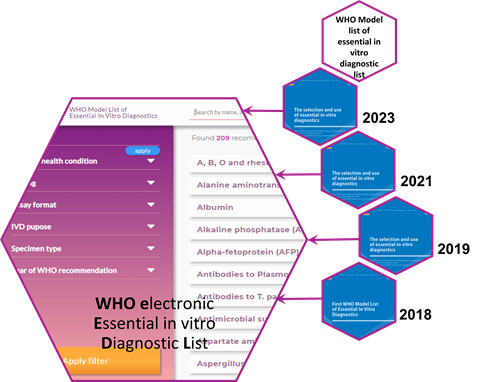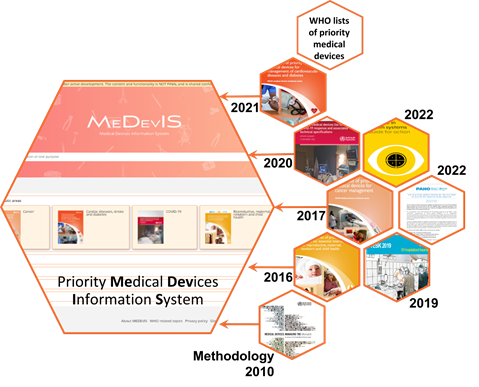Health professional uses a lancet to prick the finger of pregnant and diabetic person. Glucose levels and blood pressure measurement monitoring at CEDEBA.
Strengthening diagnostics capacity
Whilst approximately 70% of healthcare decisions are made based on diagnostic test results, only 3–5% of healthcare budgets go to diagnostic services. In many countries clinicians don’t have access to basic diagnostic tools or laboratory tests needed to support patients. When they are available, vast distances and isolated communities often make testing people extremely difficult.
Recognizing the importance of access to diagnostics, a new resolution was adopted by the World Health Assembly (WHA76.5) in May 2023 to strengthen global diagnostics capacities. In response, WHO established the Diagnostics Taskforce as a collaborative mechanism between all WHO programmes, at all three levels of the organization, to support the implementation of the resolution, and to serve as the entry point to all stakeholders working with countries on strengthening diagnostics capacity.
Taskforce members support countries in assessing national needs for diagnostic technologies (including medical devices), ensuring quality, and providing implementation guidance, particularly in low-resource settings. They offer advice on selecting and prioritising essential diagnostics and help strengthen health systems, including national laboratory systems. Additionally, they provide training for the healthcare workforce to use diagnostics effectively, from primary care to complex procedures requiring specialised skills.






